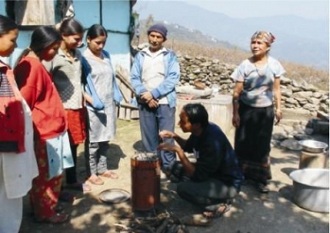Energy, Available online 14 September 2012
Factors affecting fuelwood consumption in household cookstoves in an isolated rural West African village
Nathan G. Johnson, Kenneth M. Bryden, Department of Mechanical Engineering, Iowa State University, 1620 Howe Hall, Ames, IA 50011-2274, USA. Email: kmbryden@iastate.edu
This study examines the factors that affect fuelwood consumption in cookstoves and estimates fuelwood consumption associated with the use of cookstoves in a rural isolated West African village with a population of 770. Five primary applications of cookstoves were identified: cooking meals, heating water for washing, roasting peanuts, making medicine, and steeping tea. Six factors were identified that significantly impacted cooking energy use: the type of cookstove application, family size, total mass of wet and dry ingredients, mass of dry ingredients, the use of burning embers as an igniter, and the number of fires used during a cooking event.
Annual village fuelwood use for all cookstove applications was 234 metric tons; cooking meals and heating water accounted for 65% and 27% of this fuelwood use, respectively. Fuelwood consumption per person was strongly linked with family size. As family size increased from five to 20 members, fuelwood consumption decreased from 20.6 MJ cap−1 day−1 to 10.5 MJ cap−1 day−1.



